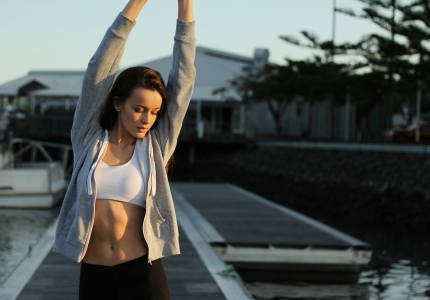Choosing the type of yoga that works best for you is just as important as the decision to finally practice it. Each modality has its own particularities, so depending on the goal you have in mind, some will be better for you than others.
Now that it has gone from being a fashion or a trend to being part of the lifestyle of millions around the world, there are so many types of yoga that even the experts themselves can’t agree on the amount of modalities that exist. In addition, certain variants often appear that are a twist on some of the most popular versions incorporating something novel.
Hatha yoga is an ancestral discipline native to India that seeks to achieve balance between body, mind and spirit through the use of different physical postures or asanas. Starting from a foundation that belongs to the traditional yoga going back thousands of years, different styles or variations have emerged that you have probably heard of, such as Vinyasa Yoga, Ashtang Yoga or Bikram Yoga.
When it comes to choosing one of them, it is important to bear in mind that some require a less intense physical effort, while others have a level of intensity that is comparable to sports such as running or kickboxing. Of course, there is always the option of switching between varieties depending on the moment or a specific need that you may have. In any case, we’re here to tell you which types of yoga are the most well-known and widely-practiced.
1. Vinyasa Yoga
In the Sanskrit language, Vinyasa is the name given to the relationship between movement and breathing. This modality of yoga, very widespread in the West, is based on the practice of asanas (or postures) involving body movements that are synchronized with specific types of breathing. As you deepen your practice, the posture’s level of difficulty increases, although the sessions always conclude with relaxation exercises.
2. Kundalini Yoga
As a type of yoga with a profound spiritual component, it also known as the "the yoga of consciousness." The postures that it promotes, combined with pranayama breathing exercises (and often mantras), seek to balance the chakras as a means to prevent physical and emotional illnesses. It is a very fluid type of yoga with a moderate level of physical activity.
3. Ashtanga Yoga
This modality is also called the "yoga of the eight members," as it consists in the following of eight precepts or rules: prohibitions with respect to behavior (no lying, not stealing, etc.); precepts such as adhering to certain disciplines; asanas or postures (in which the spine has to remain straight); pranayama or breath control; pratiajara (eating little); dharana (concentration); dhiana (meditation) and samadhi (complete absorption).
4. Bikram Yoga
This type of yoga has the distinct feature of being practiced in closed spaces at a constant temperature of 108º F. It includes a variety of 26 postures that are combined with high-perspiration breathing exercises: perfect for eliminating toxins and reducing weight. The sessions normally last 90 minutes and the exercise can have the same level of intensity as 20 minutes of running.
5. Aerial Yoga
Aerial yoga is one of the newest and most original modalities. It derives its foundation from Natha Yoga and incorporates some techniques that are characteristic of pilates. To practice it, you must suspend yourself in the air with the help of a cloth or a hammock attached to the ceiling. The postures that are practiced are the traditional ones, although always playing with gravity so that each stretch is more intense.
6. Fitness Yoga
As a hybrid between fitness and yoga, this variety is aimed at strengthening the musculature and toning specific areas of the body such as the abdomen, legs and buttocks. The postures that are worked on in Fitness Yoga are accompanied by deep breaths, which leads to greater concentration throughout the exercise. As the variety with the greatest component of physical activity, it is especially recommended for people who have already practiced yoga before and are now looking for a physical activity with greater intensity, one that wouldn’t require them to give up the mental benefits that yoga provides.
If you liked this post you probably would like to know about the benefits of yoga. Keep healthy!



